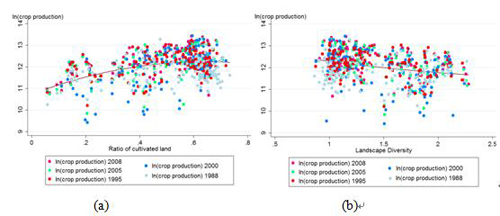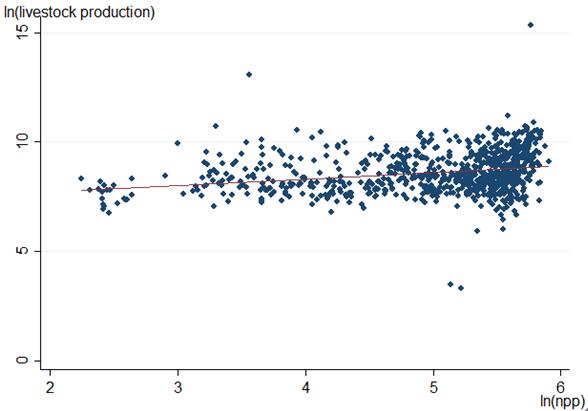How to integrate land uses, ecosystem service and function, and human well-being to explore an effective means to increase human well-being via intervening regional land-use behaviors is of significance and urgent.
Recently, Prof. DENG Xiangzheng, Institute of Geographic Sciences and Natural Resources Research (IGSNRR), Chinese Academy of Sciences (CAS) and his collaborators have just published three pieces of articles on the Journal of Cleaner Production.
By using econometric model, the Estimation System of Land Production (ESLP) and multi-level econometric model, researchers have explored quantitatively the relationship between land use, ecosystem service and human well-being, estimated the land-use-induced impacts of ecosystem service and human well-being and then put forward the means for optimizing land-use to improve ecosystem service for guaranteeing increases in human well-being at regional extent.
They found that the relationship between cultivated land change, landscape diversity and crop production. In the case study of Hebei Province, China, the study indicates there is a positive effect of landscape diversity on crop production while a negative effect via influencing land uses (Fig. 1).
Thus, it is of primary importance of maintaining some a certain level of landscape diversity for sustaining the regional crop production.
 |
|
Fig. 1. Relationship between ratio of cultivated land (R) and crop production (in logs) (a) and landscape diversity (H) and crop production (b) of Hebei Province, China, 1988 to 2008.(Image by DENG Xiangzheng) |
The team analyzes the trade-offs between land conversions and agricultural productivity. Estimation results show that land productivity in the case study care of Shandong Province is unevenly distributed, which is higher in the west part while lower in these places where cultivated land conversion occurs remarkably (Fig. 2).
 |
|
Fig. 2. Estimated mean annual land productivity of Shandong Province, 1985-2010. (Image by DENG Xiangzheng) |
“The overall trend of land productivity is kept decreasing during 2003-2010 as remind us to enhance trade-off management of regional ecosystem service and function through adjusting its land uses”, said Prof. DENG.
In the case study area of Qinghai Province, they reveals the interaction between livestock production and net primary productivity (NPP).
The total value of livestock production and NPP influence each other. There are positive effects of temperature, sunshine hours, relative humidity and rainfall on NPP, and therefore indirectly affect livestock production (Fig. 3).
Higher grazing density negatively affects NPP, so appropriate grazing density and establishing natural reserves are feasible solutions for sustainable livestock farming.
 |
|
Fig. 3 Relationship between NPP and livestock production of Qinghai Province, 1990-2010.(Image by DENG Xiangzheng) |
References
1、Xiangzheng Deng, John Gibson, Pei Wang. Relationship between landscape diversity and crop production: a case study in the Hebei Province of China based on multi-source data Integration. Journal of Cleaner Production 142 (2017) 985-992. 2、Xiangzheng Deng, John Gibson, Pei Wang.Quantitative measurements of the interaction between net primary productivity and livestock production in Qinghai Province based on data fusion technique. Journal of Cleaner Production 142 (2017) 758-766.
3、 Xiangzheng Deng, John Gibson, Pei Wang. Management of trade-offs between cultivated land conversions and land productivity in Shandong Province. Journal of Cleaner Production 142 (2017) 767-774.